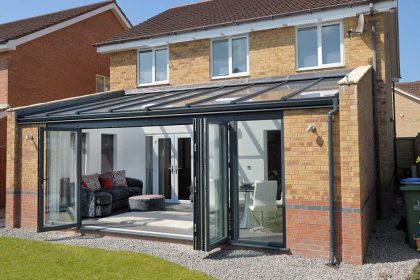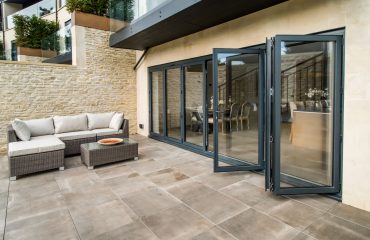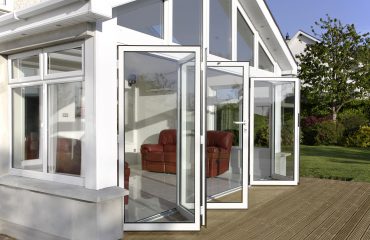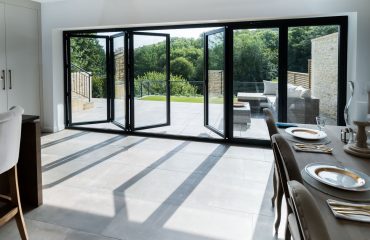
Tips for making your conservatory a cosy, usable space all year round
A conservatory can be a stunning extension to your home – full of light, giving you a connection to the garden and extra living space. At Affordable Windows & Construction Ltd., we know how many homeowners in Slough, Burnham and the wider Berkshire area invest in high-quality uPVC conservatories and want them to function comfortably, even when the temperature drops. In this article we’ll walk through practical steps you can take to keep your conservatory warm through the winter months — from addressing heat loss to smart usage habits.

1. Understand why conservatories get cold
Many conservatories struggle in winter because of heat loss through glass, roofs and frames. As one advisory blog explains: “Older conservatories aren’t usually insulated in the same way as houses, which means they’re prone to being either too cold or too hot.” Heat escapes particularly through the roof, single glazed windows, and poorly sealed frames. If your conservatory has a polycarbonate or simple glass roof (common in older builds), the insulation will be weaker. So the starting point is recognising that without some intervention, the space may become unusable in colder months.
2. Improve insulation and glazing
One of the most effective ways to keep your conservatory warm is to improve its insulation and glazing. Consider these upgrades:
-
Double or triple glazing – Upgrading to modern energy-efficient glazing helps trap heat inside and reduce cold transfer.
-
Better roof insulation or upgrade – Since the roof is a major source of heat loss, replacing older glass or polycarbonate with a “warm roof” system or highly insulated glass roof makes a big difference.
-
Seal gaps and draft-proof – Check seals around doors, windows, roof vents and the frame. Any cracks or gaps will let cold air in and warm air out.
-
Insulated flooring – The floor can also be a cold spot. A carpet with thick underlay or upgrading the floor with insulating properties helps keep feet warm and prevents heat draw-out.
By investing in these structural improvements, you’re making your conservatory part of your home’s living space—not just a seasonal add-on.
3. Use smart heating & furnishings
Once the “fabric” of the conservatory is improved, support it with appropriate heating and furnishings.
-
Radiators or electric heaters – If your conservatory is connected to your central heating, consider adding a radiator. If not, a well-positioned electric heater or radiator designed for conservatories will help.
-
Underfloor heating – For a more premium solution, underfloor heating provides an even distribution of warmth and works well when the floor is upgraded/insulated.
-
Heavy rugs, curtains or thermal blinds – Soft furnishings help trap warm air. Installing thermal blinds or heavy curtains closes the gap between the conservatory and the cold outdoor environment. They work as an extra barrier.
-
Thermostat/zone control – If possible, treat the conservatory as a separate heating zone. That way you can heat it when needed without affecting the rest of the house.
4. Make everyday usage work for you
Even with structural improvements, how you use the conservatory matters.
-
Use sunlight – During the day, let the sunlight in (open blinds if needed) so you benefit from passive solar gain. As dusk falls, close blinds or curtains to keep that warmth inside.
-
Avoid big temperature swings – It’s better to keep the space at a moderate level rather than letting it go cold then blasting heat.
-
Ventilation when required – Interestingly, you still need some ventilation. Too much sealed in cold air (especially if wet or damp) can lead to condensation which undermines thermal comfort.
-
Keep the conservatory integrated – If possible, leave at least one door open (between the house and conservatory) so heat from the main house helps raise the temperature in the conservatory and it doesn’t become isolated and cold.
5. When major upgrades are the right choice
If you have an older conservatory with minimal insulation, single glazing, or a very cold roof, you may find that incremental fixes only go so far. Many installers now offer full conversion options (warm roof systems, high-spec glazing) that turn a conservatory into a true year-round extension. If you find you’re still reluctant to use the space in winter, that may be the time to talk to a specialist about a more significant upgrade.
Conclusion
For homeowners in Slough and Berkshire who have chosen quality conservatories from Affordable Windows & Construction Ltd., the good news is that winter needn’t mean turning the space into storage. With the right combination of insulation, glazing upgrades, heating, and usage habits, your conservatory can become a comfortable, warm living area – all year round. Start by addressing the weakest links (roof, glazing, drafts), then layer in heating and furnishings, and you’ll find that your conservatory becomes a favourite space even when the cold sets in.
When you’re ready to explore options – whether for upgrades, replacement roofing, or a full-conversion to a warm roof conservatory – we’re here to help. Get in touch and we’ll guide you through what’s right for your property and budget.




